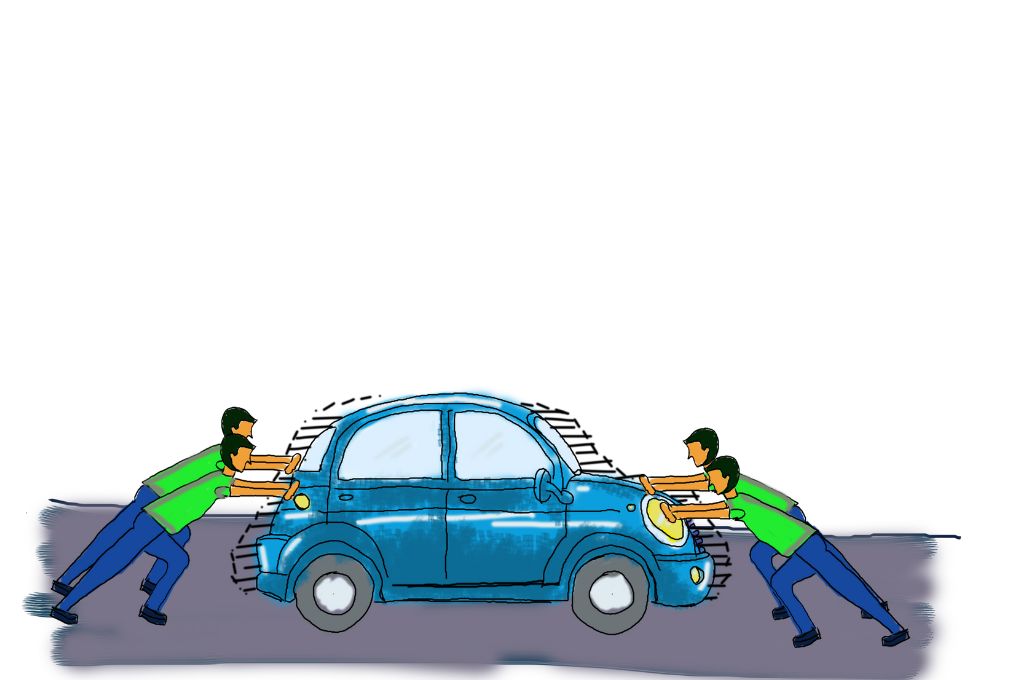The ‘rags to riches’ story trope is perhaps one of pop culture’s favourites, and for good reason. We want to believe that the work we do towards having a good life really counts, and that we are the biggest drivers of change in our lives. However, there’s a reason why this trope cannot be realised for everyone, and stays limited to books and movies.
In a capitalist society, where the pursuit of profit and the free market serve as the basis for economics, it’s difficult to assure a basic lifestyle where needs are met for everyone. Lifestyles are dependent on how much money you can make. This, in turn, is dependent on a range of factors—the labour market, the economic climate, and cultural and structural systems such as caste, class, and access to networks, among other things.
Too often, we subscribe to the myopic narrative that if people work hard, they can achieve their goals; and those who aren’t able to, are perhaps lazy. In fact, I believe that from a young age we are taught through various systems—our schools, prevailing cultural norms, the media—that we must earn what we want, and if we can’t do this, something may be wrong with us. For many, this can feed into a cycle of worthlessness; it can negatively impact mental health and well-being.
For example, our education system focuses on certain skills and neurotypical behaviours as indicators of success, but doesn’t acknowledge other factors at play. As Sir Ken Orbinson highlights in his TED talk, the way that schools currently tend to function is to produce consumers and employees of tomorrow, who will not ask too many uncomfortable questions. Paulo Friere’s landmark book, Pedagogy of the Oppressed speaks about the ‘banking system’ of education where knowledge is deposited into children who are considered empty vessels, to be withdrawn at a later date. This model rewards concentration, memory, and reproduction of information, over other skills such as critical thinking, visual and spatial reasoning, or social skills.
Given this, we often internalise the narrative that we, as individuals, are somehow at fault and need to change. Whether it’s through self-help books, upskilling, life coaches, or any other avenue, self-improvement and increasing productivity are perceived as ‘solutions’.
Is improving yourself or being more ‘productive’ really the answer?
In an article for The Correspondent, journalist Tanmoy Goswami analyses the link between productivity and mental health. He critiques a statement made by philanthropist Kiran Mazumdar Shaw, that makes the case for investing in mental health. She writes that if we don’t invest in mental health, it will cost us “over a trillion dollars in lost productivity”. Goswami questions why productivity is a motive to improve well-being. He says, “Apparently, a mentally healthy society is not the civilisational goal it ought to be. It is just another commodity, another dumb variable on an Excel sheet. Manipulate well for best returns.”
We need to overhaul our understanding of productivity and self-improvement altogether.
“An individual’s mental health is of no consequence as long as they can maintain their productivity (or the appearance of it),” Goswami adds.
If you think about it, being productive is not actually an indicator of well-being. People with mental health issues can be highly productive. We need to overhaul our understanding of productivity and self-improvement altogether. This is challenging, considering that there are entire industries dedicated to selling productivity and self-improvement.

The future of mental healthcare is community-led, reflective, and intersectional. | Picture courtesy: Toggl
Advertisements are always telling us how we should appear in the world. We’re sold products to improve ourselves. Hair care, skin care, appearing more confident, dressing better—all of these and more, exhort us to change. As a person of colour, journalist Ayesha Muttucumaru laments on colourism in India, “One notable example is the ‘fairness’ cream Fair & Lovely whose advertisements in India have historically implied that fair skin might help you meet the person of your dreams, or finally get that job you’ve always desired.” Research on the ethical issues in marketing skin lightening products suggests that advertisements like these deeply impact our self-esteem.
Mindfulness programmes constantly silence questions on structural causes of stress.
Apart from changing externally, the self-help industry is also constantly selling us tools to improve internally. From books, to coaches, to apps, this industry is constantly growing. Professor Ronald Purser’s critique of the mindfulness industry outlines how mindfulness apps and programmes constantly silence questions on structural causes of stress and make individuals feel bad for ‘not being mindful enough’.
Not to say that internal work isn’t important. It is; we all need to work on ourselves. But we need to ask ourselves: What is the goal of improving? Today, self-help often looks like:
Self-help books often read as a set of habits that we simply need to develop. For example, building a routine, making sure to sleep on time, eating on time, or communicating in a certain way. While some of these might be healthy, often, habits are prescriptive, and are hinged around ‘doing something’. A person may try to develop these habits and fail. This again makes it seem like they have failed as an individual—tying into a cycle of worthlessness and helplessness.
Using certain habits as a marker for wellness can make mental health issues invisible.
Even when an individual does develop ‘good habits’ and manages to sleep well or retain their job, they may still have depression or anxiety. Using certain habits as a marker for wellness can make mental health issues invisible. So, not only do prescriptive habits affect those who cannot be productive, but also those who can.
Changing habits is a very self-oriented process, and further reinforces the notion that self-help is individualistic. Whereas, if you look at how burnout or exhaustion function, it’s often external factors that don’t enable an individual to take a break. As this Harvard Business Review article shows, no amount of breathing techniques or ‘learning to say no’ can help you, if your workplace is badly structured. The article lists the following factors that contribute to burnout: Unfair treatment at work, unmanageable workload, lack of role clarity, lack of communication and support from one’s manager, and unreasonable time pressure. It’s clear that these issues cannot all be controlled or changed by any one individual. Research also shows that employee care programmes do not really help in addressing issues with engagement or burnout. We simply aren’t having enough conversations around the fact that what an individual needs in order not to burn out isn’t always accessible to them.
Healing or getting better doesn’t involve just one person.
Even when we think about healing—whether it’s group therapy, or even one-to-one therapy—it takes place in a relational context. The therapeutic relationship is the biggest driver of change, influencing outcomes more than techniques, experience, and type of therapy. So, it’s clear that healing or getting better doesn’t involve just one person, and self-care can sometimes take that context away.
So, what needs to change?
We need to look at different models when it comes to mental healthcare and well-being.
In India for example, there has been a long history of ritual healing when it comes to mental health issues. Ritual healing is the traditional healing that occurs in religious places like dargahs and shrines. It has a spiritual bent, and focuses on expression of symptoms rather than suppression. Traditional, western approaches to psychiatry and mental health focus on the latter—suppressing symptoms. Studies show the impact and helpfulness of ritual healing, and the work of experts such as Sudhir Kakkar and William Sachs suggests why these practices maybe more suitable to our contexts than a typical, western psychiatric approach.
We need to create spaces for healing where the focus is not on improvement as a route to well-being.
More importantly, we need approaches that don’t rely on an individual-centric outlook, and move beyond this to include communities as resources for well-being. For example, Bapu Trust, a community mental health non-profit working in the bastis of Pune uses a blended approach for their community-level work. They use art-based therapy and work on expanding support networks for individuals in distress to include their families, friends, neighbours, and so on, as a part of the healing process.
We also need to create spaces for healing where the focus is not on improvement as a route to well-being. Survivor-led movements, for example, like the Hearing Voices Network (HVN) or Mad in Asia, show how healing can be a community exercise, where people don’t need to feel like they are struggling in isolation. These groups also engage in various levels of advocacy for this cause, which helps challenge the helpless feeling when people are struggling with a mental health issue.
The future of mental healthcare is community-led, reflective, and intersectional. It is a future of questioning systems and structures that cause distress. The time is ripe to adopt these lenses and practices into mainstream approaches of mental healthcare.
—
Know more
- Learn more about the link between capitalism and mental health.
- Read about the impact of psychiatry and colonialism on mental illness.
- Explore how ‘pandemic productivity’ can affect well-being.




